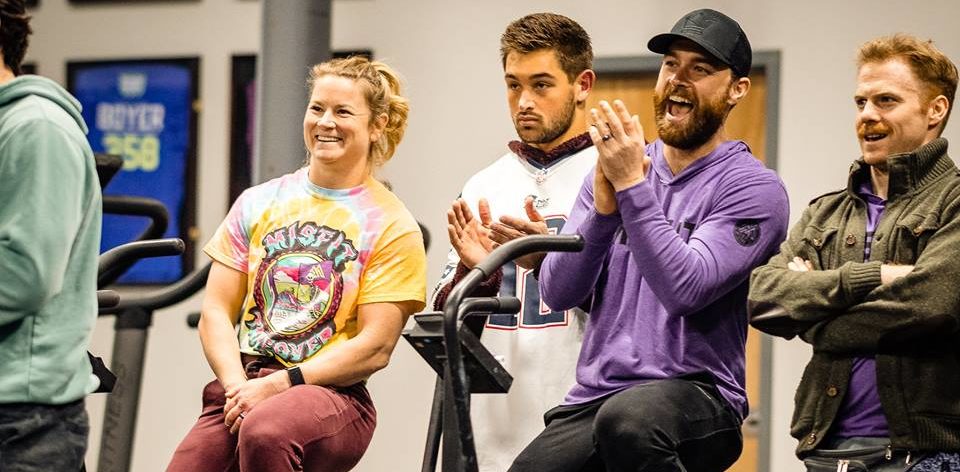How to Interpret Your Crossfit Quarterfinal Results
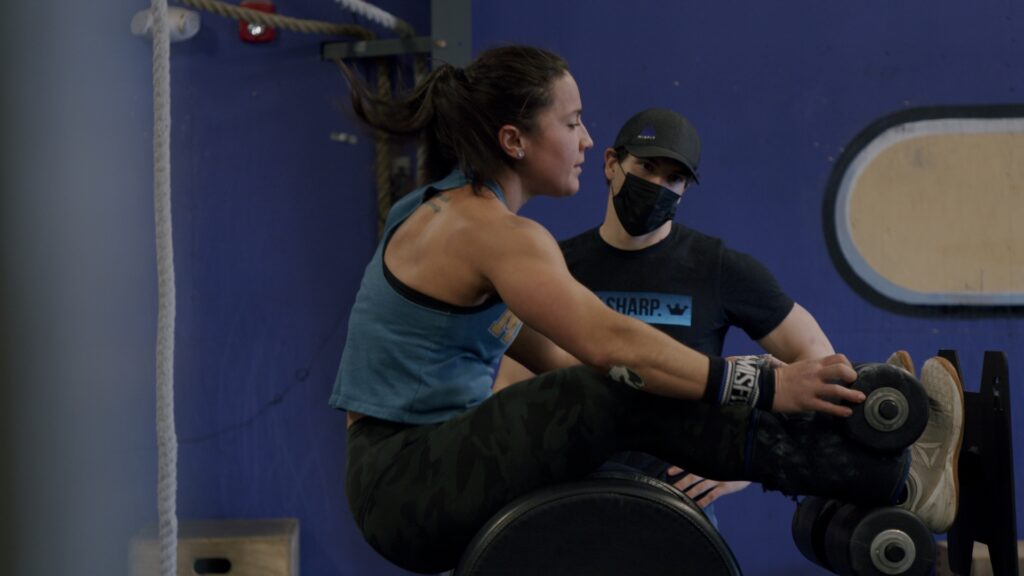

The end of the Open and Quarterfinals mark the end of the competitive season for 99% of us, and the annual shareholder back-to-the-drawing-board meeting date has been set: right now. For the recreational fitness enthusiast, Quarterfinals were a fun and exciting change that allowed athletes to display the fitness gained over a year or more of training. For those seeking a coveted Semi Final invitation, unless your name landed on one of the first couple pages of the leaderboard, you may be wondering what went wrong. For coaches the answer may be obvious, but for athletes without someone who can pick apart what happened and why you may feel like you’re wandering around in the dark without a flashlight.
That’s where we come in. We’re going to break down each Quarterfinal Test and then talk about the action steps you need to take to improve each test. I’m happy but unsurprised to say that every action step outlined in this piece is hidden in plain sight – they’re already built into every Misfit Athletics program, so we’ll tell you where to look. This means you simply need to make an honest assessment of which points apply most to you and then dig into the recommendations and get after it.
Before we get into it, I recommend brushing up on some vernacular used in Misfit land which can be found here: https://misfitathletics.com/articles/new-workout-description-format/
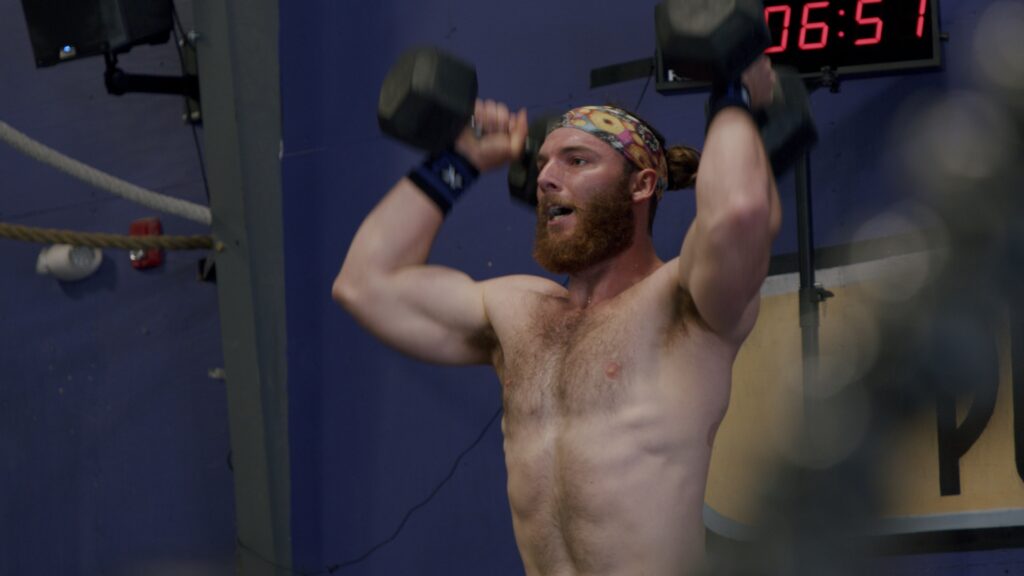
Test 1: Dumbbell, Handstand Push Ups, and Double Unders
Duration: Short
Stimulus: Muscle Overload
Pacing: Reach/Send
What went wrong: your shoulders died, and your rep speed wasn’t fast enough
Discussion
More often than not, athletes are rewarded in CrossFit for manipulating a workout to cater to their strengths with the desired goal of simply not stopping. Test 3 (the wallball and row) is a good example because even if you decide to do 12 sets of 10, you could still get a good score as long as you picked your wallball right up after each 1-2 second break. Test 1, however, did not allow that. This test not only required you to not stop moving and do things unbroken, but it also made individual rep speed matter. Doing every set of each movement unbroken with quick transitions wasn’t enough – you had to do every individual rep FAST to find yourself in a competitive spot.
Action Steps
Improving a test like this comes down to two things: training intensity and doing your weekly work. Training intensity may seem like a cop-out, but more so than any other test this weekend you had to prove that you can go very fast. This means that your metcons and intervals need to allow you to do just that: go fast. If you look at most of your training pieces and find yourself thinking of ways to game them without ever saying to yourself, “I just need to set my hair on fire and see what happens”, you’re not training that upper-end output. Choose the right version of the workout (MFT, Hatchet, etc), and be willing to modify weights and reps to allow you to regularly GO. Before you get too far into your rebuttal of “but my shoulders hurt,” consider how often we ask you to perform “1 Fast Set of HSPU”. While shoulder stamina is a factor, that can be seriously mitigated by moving fast and not spending excess time under tension, and this rule applies to essentially all upper body movements. Check our Weekly Work, Fasted Cardio, and Skill pieces and be on the lookout for things that say something like “we are looking for fast reps – stop when things slow down”. You’ll find those remarks most often in, you guessed it, upper body gymnastics.
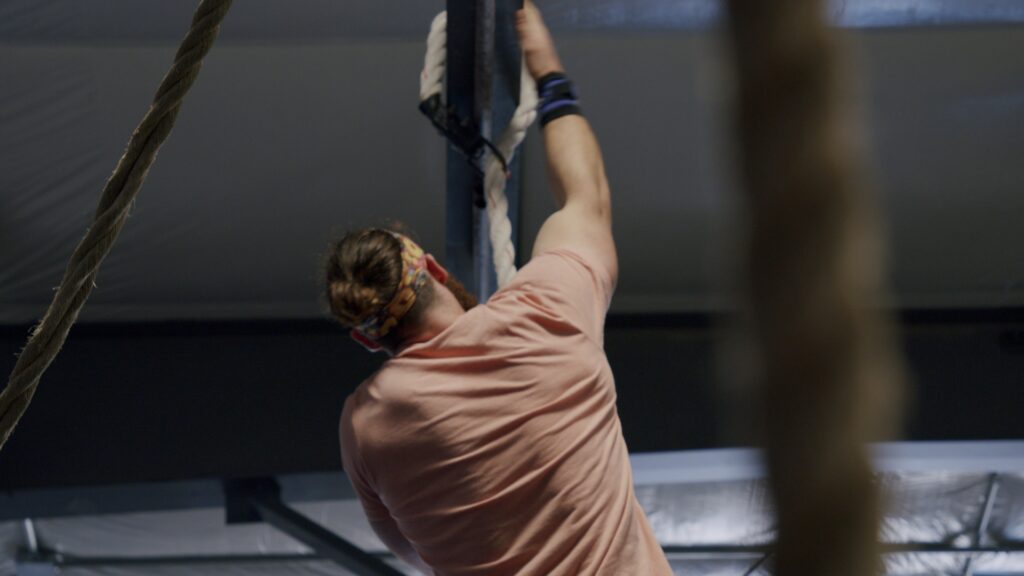
Test 2: GHD Sit Ups, Rope Climbs, and Pistols
Duration: Long
Stimulus: Muscle Overload
Pacing: Sustain
What went wrong: variance and aerobic work
Discussion
Did your eyeballs pop out of their skull after you crunched the numbers on this workout? You’re not alone, and this workout put a big emphasis on the importance of variance as well as your aerobic engine. Variance in not only movements and time domains but rep schemes and stimuli are the name of the game when preparing to compete. Test 2 gave us a stark reminder that there is a reason we will occasionally drop you into no-man’s land with a deft dose of volume in a single movement, all at once. The total volume of the workout itself isn’t astronomical relative to what we’ve seen in training or testing: 100 consecutive pistols in 2013 and 120 GHD Sit Ups (paired with an extremely heavy deadlift ) in 2016, both at Regional level competition. The second point might not be as intuitive, and that’s your aerobic engine. First, the ability to flush waste during a workout is a skill that separates the best from the pretty good. Second, many athletes decided to do this workout as close to the deadline as possible, meaning they had already had at least 3 events already under their belt for the weekend, including a solid dose of squatting and lower body tests. Athletes whose aerobic capacity is up to par not only were able to stay moving at a steady pace throughout the workout but were also significantly less affected by the preceding 3 events and were significantly less sore than most the following day.
Action Steps
Every once in a while, we will slap a gigantic set of a single movement in a metcon or interval. These are your opportunities to see how your body responds during and after to varying approaches. Do you do all 60 GHD sits ups at a consistent clip without stopping, or do you do faster sets of 15? The second step is to do your Bitch Work and your Fasted Cardio. Fasted Cardio trains your body to switch between fuel sources to optimize your performance and teaches your body to flush waste during rest and recovery periods (both intraday and intraworkout). For more on Fasted Cardio, head to this blog post and scroll down to the link where we talk all about fasted cardio on the Misfit Podcast.
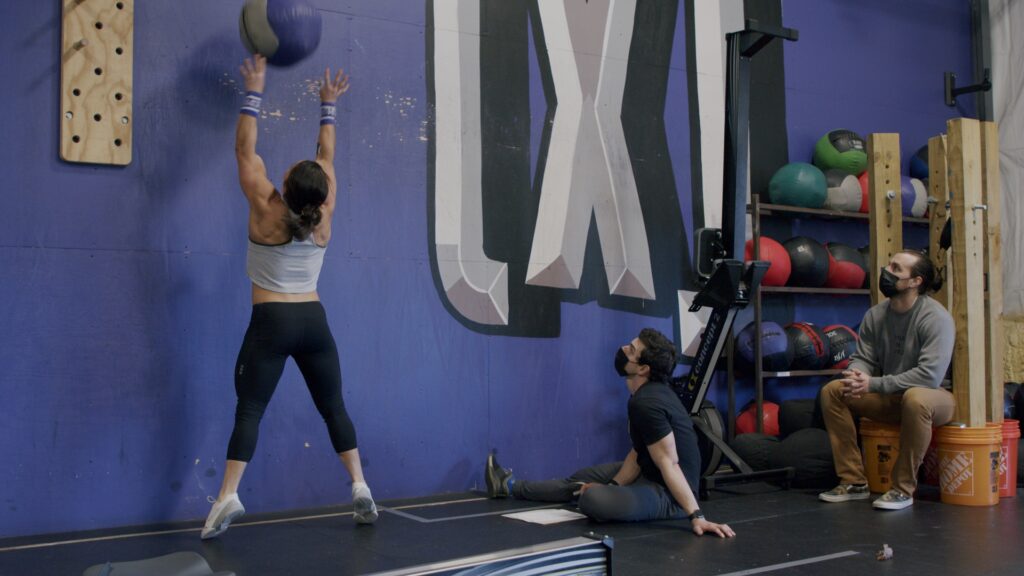
Test 3: Wallballs and Rowing
Duration: Short-medium
Stimulus: Cardio/Gas
Pacing: Reach
What went wrong: you skipped your Bitch Work
Discussion
This test toed the line nicely between whether you needed more grit or more fitness to do well, coming down to how hard you wanted to row for a very uncomfortable duration. With a relatively mild but not insignificant buy-in, getting on the rower for a short-middle distance to finish a workout is nightmare fuel for many. As alluded to earlier, you could have broken up your wallballs in a few ways and still been set up for a solid score assuming you could hack it on the rower.
Action Steps
If you didn’t take the opportunity to pay attention to Coach Sherb’s pacing instructions in the 1,000,000 rowing pieces that were programmed over the last year, that’s where you need to start. The benefit to a machine is that you can calculate to the second exactly how long something will take a certain pace – you just have to do it. Personal observation of both Austin and Caroline showed the coach-athlete relationship and athlete intelligence at play in one harmonious symphony. Caroline and Drew agreed on the necessary calorie/hour pace based on known data points for the expected duration, and while everyone was screaming at Austin to go faster Drew was screaming at him to keep his strokes per minute at 32. Both yielded optimal results for their capacity because both athletes know themselves. Do your Bitch Work, and take maniacal notes for all of the varying durations and machines.
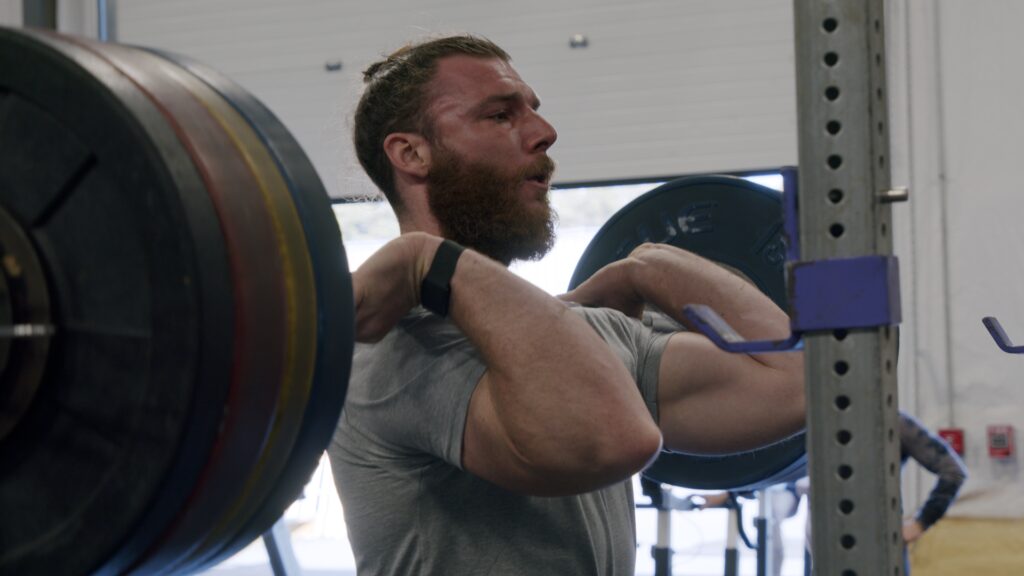
21.4 and Test 4: Clean complex and 4RM Front Squat
Duration: Short
Stimulus: Muscle Overload
What went wrong: movement efficiency
Discussion
I’m actually going to prioritize 21.4 here, but both lifting tests have similar takeaways. The obvious solution to many is strength: you simply couldn’t lift heavier. While there’s obviously a strength requirement to lift any amount of weight, it’s also the most frequently missed boat among CrossFitters. Movement efficiency and positioning are critical. One reason 21.4 was so challenging for many is that athletes spend so much time in the off-season trying to measure progress in the olympic lifts by getting their maxes up without changing inefficient movement patterns, and PRs in the off season mean absolutely nothing if those improvements aren’t founded upon learning how to do the olympic lifts correctly. An ugly PR in a snatch or clean and jerk in training means almost nothing because it’s not replicable on a consistent basis or under duress, like when you have 7 minutes to find a complex when your forearms and shoulders don’t work. The relationship between weight lifted and movement efficiency diverges even further when the test is a complex, which prioritizes movement efficiency even further. Olympic weightlifters literally use complexes as a way to reinforce positioning and technique to improve 1RM lifts, so assuming your preseason Clean and Jerk PR would translate to a bigger 21.4 score is, unfortunately, a mistake.
Action Steps
Barbell Therapy. That’s my easiest, lowest barrier to entry solution to rewiring your brain to improve the Olympic lifts short of finding a coach who knows what they’re doing. This can be done on your rest day with little added fatigue with as little as a PVC pipe. The Olympic lifts are about moving your body around the barbell, not brute strength. We will get you stronger through back squats, deadlifts, and presses, but translating that strength to a snatch or clean relies on you knowing how to most efficiently get the bar from A to B, repeatedly. You’ll find Barbell Therapy on the website weekly, and that video explanation can be found HERE. Along the same lines, mobility and positioning are key, as the biggest difference between a heavy back squat and a front squat is the added mobility demand of the latter. Improve your mobility and learn to create a tight front rack position and your front squat will take care of itself.
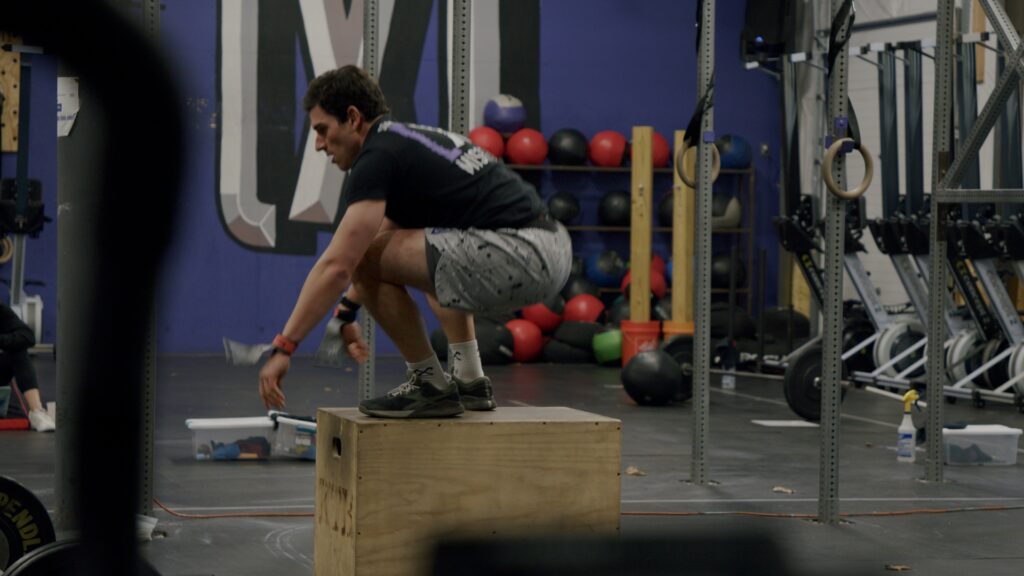
Test 5: Snatches and Burpee Box Jumps
Duration: Short
Stimulus: Gas
Pacing: Varies by individual
What went wrong: fitness
Discussion
For me, this was the best “test” of the weekend, primarily because it was precisely that: a test. A test isn’t always going to leave you rolling around on the floor or unable to feel a given appendage. A test blends a predetermined number of components of fitness and tells you exactly where you’re at, and for me, Test 5 blended the most together. For the recreational quarterfinalist, this was a lifting session. For the intermediate quarterfinalist, this was a little bit of everything: strength, stamina, gas tank, movement efficiency, and work capacity. For the elite, this allowed athletes who could handle the loading to rifle through this piece in under two and a half minutes, where the separation was whether or not you could hold onto the bar. The other overlooked component to this test is that because it was the last one of the weekend, athletes needed to perform it feeling undoubtedly beat up. This is another nod to taking your long, slow aerobic work seriously because the athletes with the most robust aerobic engines felt much better on Sunday than those lacking the ability to recover from day to day. That means this test also had a component of endurance, not immediately apparent given the extremely short duration of the test itself.
Action Steps
Nothing, but also everything. Nothing went wrong for you in this test, your score is almost exactly what your capacity dictates it should have been. A missed rep here or there will yield a very different result on the leaderboard. Still, anything that went significantly wrong in this workout is simply a learning opportunity and a microcosm of your fitness. If your argument is that you weren’t strong enough to lift the barbell, that’s understandable, but not being strong enough to lift it one time is a very different conversation than being able to lift it 18 times. Everything we’ve discussed before applies here as well: training intensity, knowing yourself, movement efficiency, your aerobic engine, and your work capacity as a whole can all be tied to this test. The action step here is to make the connections between the previous tests and this one, and then attack your weaknesses.
Every point in the season provides new opportunities to reassess, re-engage, and then attack. It’s a constant, iterative process that needs to be taken seriously as you develop as an athlete. It’s also important to realize that what is a strength today may be a weakness tomorrow, and that’s how it should be. If you’re moderately proficient at everything, then you have the luxury (or curse) of choosing what needs the most attention, which will eventually mean that whatever you attack will become a strength, making everything else a weakness. Don’t let this overwhelm you. You now have at the very least, a solid starting point for where to point your post-season efforts, and if you’re a Semifinals athlete, you’ve still got time to get your wheels turned in the right direction. Reassess, reengage, attack, repeat.

Written by Hunter Wood


